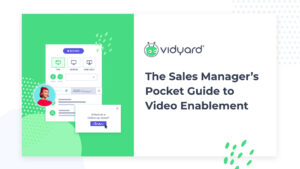It’s an all-too-common story: Someone is learning how to market a startup, so they acquire all the trappings of a marketing operation without knowing why they work. They launch a Twitter account, a LinkedIn company page, a website, and start running ads—and nothing happens.
Despite all their posting, launching, and running up the corporate card, few visitors become leads. And of those, few buy. Their problem? They didn’t start with the most important part of startup marketing: Understanding why people buy.
Without understanding why someone purchases or the journey they undergo to get there, a marketing operation rarely works. If you’re a startup, that wasted time, energy, and runway can be catastrophic.
As we’ll explain in this guide on how to market a startup, success takes more than just checking boxes and ‘being on Twitter.’ It takes a serious and well-considered startup marketing strategy.
Contents1.Your Startup Marketing Strategy Primer2.Specific Marketing Tips for Startups3.7 Types of Digital Marketing for Startups3.1 Content Marketing for Startups3.1.1Content Marketing Tips for Startups3.1.2Top Content Marketing Resources for Startups3.1.3Top Content Marketing Tools for Startups3.2 SEO for Startups3.2.1SEO Tips for Startups3.2.2Top SEO Tools for Startups3.3 Social Media Marketing for Startups3.3.1Social Media Marketing Startup Pro Tip: Court Controversy3.3.2Top Social Media Marketing Resources for Startups3.3.3Top Social Media Marketing Tools for Startups3.4 Email Marketing for Startups3.4.1Email Marketing Tips for Startups3.4.2Top Email Marketing Tools for Startups3.5 Advertising for Startups3.5.1Advertising Tips for Startups3.5.2Top Advertising Resources for Startups3.6 Websites for Startups3.6.1User Experience (UX) Optimization3.6.2User Flow Analysis3.6.3Landing Page Optimization3.6.4Add Attractions3.6.5Website Tips for Startups3.6.6Top Website Tools and Resources for Startups3.7 Event Marketing for Startups3.7.1Types of Event Marketing for Startups3.7.2Top Event Marketing Tools and Resources for Startups4.How Marketing Can Work With Sales4.0.3Top Tools for Startup Sales Teams5.Determining and Managing a Startup Marketing Budget5.0.4Additional Marketing Resources for Startups6.Working with an Agency as a Startup7.Does Your Startup Have a Marketing Strategy?
Your Startup Marketing Strategy Primer
The best marketing strategy for startups is to build a brand first, then sell. And that’s it. The goal is simply to become fixed in your audience’s mind as an entity that solves a specific problem (tired of buying expensive razors? Subscribe to cheap ones delivered to your home) and then attract enough purchases to build momentum. Very rarely can you do this through ads alone.
“Most marketers confuse brand building with brand maintenance,” say marketing experts Al Ries and Laura Ries in their book, The 22 Immutable Laws of Branding.
Maintenance is what you see most brands doing—billboards, Superbowl ads, radio spots—but that’s not how they got big. It’s too expensive and you’ll never outspend the competition. So instead, fight on your terms by having a stronger brand that spreads on its own, then supplement it with clever marketing tactics.
Put Video to Work for Your Startup
Get the free video tool designed for startups
What is a brand, exactly? It’s a promise you make to buyers and something that’s primarily communicated through word of mouth and discovered when people interact with your product. They have to like what they find—no amount of advertising can make a breakfast cereal that burns people’s mouths successful, for instance. You get one chance to make an impression.
The stronger your brand and the better the product experience, the more durable your impression and the more effective all of your marketing will be. It’s as true for consumer packaged goods as it is for marketing for tech startups.
Now, the worst marketing strategy for startups is the opposite: It’s to check boxes and go about setting up profiles and posting before you know why you’re posting. It’s to jump the gun on testing ideas before conducting research and to formulate the brand promise without ever talking to customers.
If you go that route, you’ll have all the trappings of a digital marketing strategy for startups, but you won’t get results.
Specific Marketing Tips for Startups
Here are a few quick and dirty tips for marketing a startup:
Invest in your brand: Dollar Shave Club was acquired by Unilever for $1 billion—not because its razors were better (they weren’t)—but because people knew and loved them.
Do fewer things, but do them really well: As a startup, you can’t afford to spread yourself thin. It’s better to dominate one channel than to bore audiences on many, and better to produce one remarkable asset than to write many mediocre ones.
Test for 10x tools: Through testing, determine what channels or mediums work 10x better than others, and can focus there. For instance, many startups find that their smallness is an advantage in video marketing because it makes them far more human and relatable than larger rivals.
Isn’t Video Marketing for Startups Expensive?
Video can be ‘just hit record on your smartphone’ cheap. It’s a myth that it has to cost a lot of money, and the lack of high production values can come across as authenticity. But if you do record with a smartphone, at least buy a plug-in microphone.
7 Types of Digital Marketing for Startups
There are many ways to market your startup based on what it is and who your buyers are. The smartest marketers narrow their options and pick one or two things to do well before expanding. Rely on your existing expertise. If someone on your team is a fantastic writer, write things. If they know video, get into startup video marketing.
Below, we detail seven strategies for (mostly) digital marketing for startups:
1. Content Marketing for Startups
A lot of people misunderstand content marketing for startups. The goal isn’t to write as much as you can—it’s to write a few things that are exceptionally useful.
Take the Michelin guide and star rating systems for restaurants. Michelin started that in the early 1900s by publishing maps for drivers, hoping that if people knew where to eat, they’d do more driving and buy more Michelin tires. It worked so well it became an institution.
Content is more than writing, too—it can be anything, really. You could produce guides, brand-agnostic case studies, videos, blogs, infographics, tools, checklists, or calculators. If you’ve ever tried CoSchedule’s Headline Analyzer, you’ve experienced great content marketing firsthand. The headline analyzer exists primarily to help, and people learn to know and trust CoSchedule by association.
Great content is rooted in a deep understanding of how your buyers think, and many startup marketers don’t invest enough in this.
Most startups are understandably intoxicated by the opportunity they have perceived. It’s why they started the company. In marketing that can cause a sort of willful blindness, particularly among first-time entrepreneurs. They think everyone else is as excited as they are, and that they don’t have to put the hard yards in to persuade their target audience. It’s often a problem if the company is led by a first time engineering or sales leader. Marketing often ends up being more ‘look at me’ and less about romancing the opportunity or explaining the problem they solve.
 Stan WoodsVelocity PartnersCEO
Stan WoodsVelocity PartnersCEO
Content marketing fails when it gets too solicitous, or when it has too obvious a conflict of interest. The Sisyphean struggle of content marketers is stopping others on the team from inserting calls to action or pitches for the product. Readers sense a fake immediately and flee. To create great content, follow the four Es: Engaging, educational, emotional, and empathetic.

Does Your Content Use the 4 E’s?
 Create content that connects—every time. Discover how in the Four E’s Checklist.
Create content that connects—every time. Discover how in the Four E’s Checklist.
Download Now
Content Marketing Tips for Startups
Use video: 72% of people would rather watch a video than read.
Keep it 90% product-free: Non-customers should still find it useful.
Showcase your customers: 46% of adults in the U.S. say they trust consumer-written online reviews, while only 10% trust ads on websites and 9% have faith in written messages from brands.
Stay organized: Map your content to where it belongs in your marketing funnel. You can create what’s known as a content matrix where you list off all the assets and where they belong in your funnel so you can see coverage gaps.
Create once and share everywhere: Put the effort in to create a pillar or hero piece of content and figure out how you can break it up and use it across all your distribution channels—web, email, social, sales, review sites, and co-marketing opportunities—to maximize value.
Top Content Marketing Resources for Startups
The HubSpot Blog
The Content Marketing Institute Blog
The Vidyard Blog
Top Content Marketing Tools for Startups
Design and Stock Photography: Unsplash, Canva, Powtoon
Writing and Freelancers: Grammarly, Hemingway Editor, Upwork, PeoplePerHour, Narrato
Content Management: WordPress, HubSpot, Vidyard
Collaboration and Productivity: GSuite, Microsoft, Slack, Trello, HeySpace
2. SEO for Startups
If you’re focused on inbound, it means you’re trying to get people to come to you. Your biggest traffic driver here will probably be from search engines like Google, known as organic traffic.
You will see a lot of search engine optimization (SEO) advice out there that makes it seem like magic. It suggests if you only have the right combination of keywords, you can “trick” Google and rank high on the first page. Banish that idea. Google updates its algorithm more than 600 times each year to thwart SEO hacksters.
Instead, understand what Google wants—to show people the answers they enjoy. What do people enjoy? Things that are so useful or entertaining that they click, stay to read or watch, click around some more, and share.
So really, good SEO for startups is primarily about having a website full of well-written and well-designed content. That’s why video is such a big help. People love videos, which is why adding a video to your website increases your chances of ranking on the first page of Google results by 50x. That makes it well worth the effort—especially when 75% of people never venture past that first page of search results.
SEO Tips for Startups
Do your research: Identify what keywords you want to own and what your competitors are using.
Be consistent: Use keywords consistently across your site—blogs, campaign pages, case studies, and product pages.
Language matters: Ensure you use customer language and not internal, corporate jargon.
Crosslink and backlink: Link relevant content across your site and find backlink opportunities with third-party content on other sites, i.e., integration partners, resellers, industry-related posts, and influencers.
Top SEO Tools for Startups
Mangools
Moz
Ahrefs
Alexa.com
Google Analytics
Screaming Frog
Put Video to Work for Your Startup
Get the free video tool designed for startups
3. Social Media Marketing for Startups
Social media for startups has extreme upsides and extreme downsides. Nowhere else in the world except on a site like Twitter, Facebook, or LinkedIn can you go ‘viral’ and reach massive audiences—to say nothing of having an algorithm recommend your profile and content to millions of others. But there’s a cost.
Growing a startup social media following is often equated to building a house on rented land. Social networks can change the rules overnight, for any reason, and there’s nothing you can do about it.
When LinkedIn changed its algorithm to deprioritize organic posts from companies to force them to buy more ads, most businesses had no choice but to pay. When Facebook suddenly pivoted away from video in 2018, a flight of startups including Mic went bankrupt.
When social media marketing for startups works, however, it can work wonders. The data startup CB Insights has built the largest newsletter of any B2B brand thanks to its riotously funny and useful Twitter presence. Their CEO and brand personality Anand Sanwal credits their success to daring to post provocative topics.
You don’t want to be boring ever, but in B2B, the bar is so immensely low that if you’re not boring, you will stand out. The reality is most B2B marketing is self-promotional, jargon-infested drivel. And that is because people think that in B2B, you need to be boring, serious, and buttoned up. Most B2B marketers forget that people reading their content want to be educated but also like to be entertained.
 Anand SanwalCB InsightsCEO
Anand SanwalCB InsightsCEO
What exactly should you post? Social tends to be a great place to share your startup’s content marketing, but that’s not your only option.
Test to see what works for your audience. Try text posts, videos, polls, memes, quotes, GIFs, infographics, and PDFs. Cross-promotion is often highly effective and helps you tap into other larger but related audiences—you can hand your account over to a social media personality for a day. Also, don’t forget to leverage your employees to like and share.
Watch and Learn
Hear from Vidyard’s Social Media Manager, Charlie Rogers, on strategies for growing your social presence.


Get the Social Media Calendar Template
 Start planning out your business’ social media posts using this easy-to-use social calendar template.
Start planning out your business’ social media posts using this easy-to-use social calendar template.
Download Now
Social Media Marketing Startup Pro Tip: Court Controversy
The customer data platform firm Segment ran a brand campaign that was so successful, it bled over into social media. It featured billboards in major cities greeting inhabitants with their rival city’s name, to poke fun at the idea of bad data. For instance, in San Francisco, the sign read, “Good morning, LA!”

A billboard from Segment that says, “Good morning, LA!” but is in San Francisco. Image via Segment.
“It made a lot of people laugh, but one in 10 people would write in thinking we were dummies,” says Maya Spivak, Head of Global Brand Marketing at Segment.
“In the comments, the people who understood the joke would jump in and correct them.” My favorite part is that this actor in LA got caught up in the joke and posted a picture of our billboard to his followers asking if we meant it to be there—twice. We got tens of thousands of these wonderful organic impressions.”
Top Social Media Marketing Resources for Startups
Social Media Marketing Society
Hootsuite Blog
Top Social Media Marketing Tools for Startups
Hootsuite
SproutSocial
Buffer
Canva
Adobe Spark

Get the Social Media Video Specs Guide
 Every different social platform has its own requirements for videos. Every single one is in this guide.
Every different social platform has its own requirements for videos. Every single one is in this guide.
Get the Specs
4. Email Marketing for Startups
Don’t think for a second that just because over half the world’s population—3.9 billion people—use email, it’s old and boring. It’s a direct line of communication to all those people and they check it as much as 15x per day for a total of five hours. Plus, email has one massive advantage over other channels like social media: Email is a way to build an owned audience. Nobody can take your email list from you or stop you from using it.
There are many different ways to go about email marketing, but the most common is to set triggered emails to respond when people take actions, like subscribing to your newsletter on your site. Triggered emails will form the foundation of your communication with prospects and customers if you do business online, and they offer opportunities to educate and cross-promote products.
Another way to use emails is what’s known as email nurtures. You set a series of emails to go out to someone based on an interest in a product or solution you’re offering or to activate, onboard, or upgrade a customer. Whenever someone indicates interest, they get that same series of emails. With more complex products, nurtures can drip information to educate people until they’re ready to buy.
However—and here’s the big caveat to email marketing—you have to be careful not to abuse it.
Just because you have an email doesn’t mean you should send offers right away. Think about your audience, understand their relationship to your business and why they gave you their email, anticipate their interests and needs, and only then, craft an email to send the right message at the right time.
 Mollie BodensteinerGranularEnterprise Data Architect
Mollie BodensteinerGranularEnterprise Data Architect
You also have to do the hard work of providing enough value for people to share their email in the first place. “A purchased list is never as good as an earned one,” says Mollie Bodensteiner, Enterprise Data Architect at Granular, an Iowa-based software startup. “There’s no shortcut, and then you have to work hard to ensure people are actually receiving and understanding your emails. Just because they opened it doesn’t mean they read it.”
The biggest mistake Mollie sees in email marketing? “Not having the right technical foundation to get into the inbox. You have to set up things for deliverability, configure the right authentication (SPF, DKIM, TLS, DMARC), monitor performance, avoid spam traps, keep your lists clean, and optimize your email templates.”

The Video Email Inspiration You Need
 Ready to incorporate video into your marketing emails? Take a peek at six email examples you’ll want to steal.
Ready to incorporate video into your marketing emails? Take a peek at six email examples you’ll want to steal.
Get the Guide
Email Marketing Tips for Startups
Don’t buy too much email software: The software that’s best for you depends on how much time you can dedicate to it. You may want to eventually have workflows, triggers, website integration, and lead scoring, but if all you can dedicate now is a few hours a week, better to choose a simpler, cheaper platform.
Test, test, test: A/B test your email content on a regular basis to see what yields the best open and clickthrough rates. Test things like personalization, emojis, memes, subject lines, button colors, etc.
Send videos in email: Using “video” in your subject line can increase open rates by 13% and your clickthrough rates even more.
Top Email Marketing Tools for Startups
MailChimp
Sendgrid
HubSpot
How to Run an Award-Winning Email Marketing Campaign
Email was a core distribution channel for our 2019 Holiday Campaign, which won a Telly Award for its innovation and creativity. Playful and relatable video content coupled with an irresistible subject line and a personalized user experience helped us stand out in inboxes.

5. Advertising for Startups
Another big inbound channel is running startup ads—known as paid traffic. For ads you’ll want lots of specific landing pages that show people exactly what they were promised in the ad. The biggest error in startup advertising is directing people to your homepage and hoping they figure it out from there. Direct them to exactly what the ad showed—down to the model type or product color. Otherwise, your ads will be penalized and they’ll actually cost you more.
To improve your conversions, you have to track them, revisit, and tune constantly. Nobody ever created a successful startup by launching a site, setting an ad, and then sitting back and relaxing. As Andy Crestodina, CMO of Orbit Media, a Chicago-based web design and marketing agency, explains, website marketing is a relentless game of trial and error.
“Why does someone become a lead? Consider the psychology of the visitor,” says Andy. “People come to a website with a story that led them there. They have a problem. They are asking themselves a series of questions. Am I in the right place? Does this company offer solutions that are likely a fit for my problem? Do I have reasons to believe this is a credible website? Is there evidence here? Have they helped other people? What are the statistics or stories, data points, or testimonials, that make me believe this?”
Only when you know the questions people are asking can you build a useful website for marketing.
Every person in every market has to have a series of questions answered before they will convert. Your website’s job is to answer them. That’s it.
 Andy CrestondinaOrbit MediaCMO
Andy CrestondinaOrbit MediaCMO
Advertising Tips for Startups
Use ads to test messaging: A/B test ads to see which messages work best and reuse the winners elsewhere in your marketing.
Segment: If you show one ad to everyone, it may be mildly interesting to all. But if you group your buyers into several segments and show them each something specific to them, you’ll get them excited.
If it works, keep running it: Startups often stop running an ad when the marketing team tires of it. Don’t. Let it run until the market tires of it.
Switch out visual ads often: The exception is with ads with photos, as with Facebook. Facebook’s granular targeting means the groups seeing your ads see them a lot—if they see them consistently for more than two weeks, they grow fatigued and the ads stop working.
Top Advertising Resources for Startups
Orbit Media Blog
HubSpot Blog
Google Ads Blog

Get the Social Media Video Specs Guide
 Every different social platform has its own requirements for videos. Every single one is in this guide.
Every different social platform has its own requirements for videos. Every single one is in this guide.
Get the Specs
6. Websites for Startups
Your website is often the cornerstone of your digital marketing—all roads lead to it. But many startups fail to consider their site’s purpose. Is your site the place where buyers add items to their cart or just a digital business card? Is it meant to collect people’s emails so you can market to them further or is it just a series of pages to reinforce what your sales team says?
Each goal necessitates a different approach. Our rule for startups is this: Build the fewest number of pages you can while still answering your customers’ questions well enough to get them to take a desired action. If you have too many pages, the website becomes a labyrinth, and people may get lost and do nothing.
This ideal path through your website is known as the ideal buyer journey or golden path. You should map out this journey based on the questions you expect them to ask, and make navigating to the next question simple.
Once you have an ideal user path, you can apply various strategies to increase conversions. That is, you pick an outcome tied to revenue—maybe purchases, form fills, or sign-ups—and then work backwards to see how many people you can drive there, and how many of them take that desired action.
User Experience (UX) Optimization
Make your website brain-dead simple. Assume nobody will figure anything out, and always inform visitors what will happen on the next page if they click.
“A website’s job is to answer questions but few do,” says Andy of Orbit Media. “Say I fill out a contact form. I actually don’t know what happens next. The channel is unknown and the timing is unknown. This is the key moment—the moment of truth—and all I’m left with is uncertainty. Are you going to call me back? Will you email me? Will you do it today or in the future? All these uncertainties are a problem for the prospect and a big reason they feel a need to submit several forms on several websites.”
User Flow Analysis
Website analytics tools like Google Analytics allow you to see which pages people are visiting most, and which page they tend to visit next. If you see high “drop-offs,” it means someone exited the page at that point. That generally means they didn’t find what they were looking for, otherwise, they would have taken action.
Landing Page Optimization
When you’ve found a page that performs poorly—lots of people dropping off—you can begin to test that will improve that conversion rate. For instance, adding an explainer video to your homepage.
Add Attractions
Aside from SEO and ads, what brings people to your website? And just as important, what brings them back? If all your site shows is product information, there’s not much there for people who may buy one day, but aren’t yet ready. To attract a broader audience, build authority by answering questions on a topic through a blog, a resources section, or a frequently asked questions (FAQ) page.
Website Tips for Startups
Keep things simple: Use a simple domain name, short URLs, and concise messaging on your pages.
Invest in branding: Ensure branding and design is consistent across your site.
Guide the user: Have clear primary and secondary calls to action.
Design mobile-first: Ensure your site has a mobile-friendly design and layout.
Pick the right platform: Do your research on the web platform that best fits your needs (i.e. do you need eCommerce vs. portfolio). Security, server space, speed, and support are essential factors to consider.
Top Website Tools and Resources for Startups
Grow and Convert Blog
Optimization and Conversion: Intercom, Calendly, Unbounce, Optimizely
Design, Hosting, and eCommerce: WordPress, Shopify, Balsamiq, Wix, Squarespace
7. Event Marketing for Startups
Believe it or not, events can be one of the most cost-effective marketing strategies for startups. Event marketing can be a wonderful way to not only connect with your prospects and customers but also connect your prospects and customers with each other. (Even if it’s only virtually.)
Unlike a webinar, which is a one-to-many message, events are many-to-many. People network, connect, learn, meet, and associate all the positive things that come out of that with your startup.
Types of Event Marketing for Startups
Virtual Events
If the 2020 pandemic taught us anything, it’s that lots of events still work online. Don’t bite off more than you can chew, however.
“My best advice for startups considering events as a new initiative is to think in terms of your event as a minimum viable product (MVP),” says Christine Farrier, Senior Director of Partner and Channel Marketing at Demandbase.
“What’s the smallest possible version of an event that you can launch and still extract lessons that could later be scaled up?”
Want to start hosting a virtual event big enough to feed your SDR team for an entire quarter? “Begin with the ‘friends and family’ size event,” says Christine. “If it works, conduct pre- and post-event briefings, begin documenting what works into a webinar playbook, and then double the goals for the next iteration.”
Online Events That Work
Vidyard has been running our virtual Fast Forward event for years. However, with the move to all things digital in 2020, we knew we had to step up our virtual user experience. We leveraged a third-party provider (HeySummit) to help us manage the event logistics and Zoom Webinars to host the sessions. Coupled with highly-targeted relevant content and speakers, we executed our most popular event to date—tripling our standard registrations and achieving a 55% attendance rate.

Regional Events
Where it’s practical, regional events are an approachable entry point for startups who can’t shell out cash to hold down a convention center. You can hold them in coworking spaces, partner offices, and boutique venues.
Video in Business Lunch and Learn Series
Our Video in Business Lunch and Learns are small (usually 20 to 30 attendees) regional events. They bring together local marketing professionals looking for actionable tips for activating their video marketing plans with minimal budgets.

User Conferences and Industry Trade Shows
You can market at other people’s events too. The budget option here is to simply send your salespeople to wander the showroom floor and take meetings, but if you have the money, you can book a booth, speak at breakout sessions, or host a panel.
Top Event Marketing Tools and Resources for Startups
Event Manager Blog
HeySummit
HopIn
Bizzabo
GoToWebinar
Zoom
Vidyard: Hubs, Live Streaming, and Personalized Video
How Marketing Can Work With Sales
In B2B marketing for startups, sales and marketing teams often clash. The best way to work with your sales counterparts is to spend a lot of time together and know that you’re on the same team—the revenue team—and measure the same metrics.
It’s difficult for a marketer to blame sales for not closing enough deals if they’re in the proverbial room and hearing how some of those leads were a really bad fit. And it’s tough for sales to blame marketing for driving bad leads when they can see how hard marketing is working. Both teams need to exist in constant communication and constantly asking, how can I help you help me do my job better?
Top Tools for Startup Sales Teams
Vidyard Chrome extension
SalesLoft
Outreach
Calendly

The Pocket Guide to Video Enablement
 Video for sales is the boost your team needs. Get them on board with this guide to video enablement.
Video for sales is the boost your team needs. Get them on board with this guide to video enablement.
Get the Guide
Determining and Managing a Startup Marketing Budget
A common question you get starting out is, “For early stage startups, it’s advisable to spend what percentage of your revenue on marketing?” And the answer is always ‘it depends.’
Most mature businesses spend 10% of their budget on marketing. Marketing budgets for startups will likely be higher—you’re in the insurgent stage of the corporate lifecycle where it’s build a brand or die. Though Gartner says the average startup spends 11.2% of its budget on marketing, up to 20% is acceptable.
Within that budget, spend 85% on conservative activities that you know work—branding, PR, email marketing, content marketing—and 15% on moonshot projects. Most moonshots won’t pay off (or break even), but some will succeed wildly and help you learn, grow, and pivot to channels and assets that work best for you.
Just as important as learning what works is learning what doesn’t work. After years of spending four to five hours each month selecting images for its blog posts, one startup agency learned that the blog actually looked better without them. They had been spending all this time and money and it was worse than wasted—it diverted time and budget from more profitable activities.
Additional Marketing Resources for Startups
The Best Small Business Tech Stack (Vidyard)
How to Build A Startup Marketing Budget (HubSpot)
SMB Video Marketing Guide (Vidyard)
Working with an Agency as a Startup
As a startup, you may not have the bandwidth or resources to do it all when it comes to executing or even developing your marketing and sales strategy. Luckily there are hundreds of agencies specializing in inbound and growth marketing that can help get you started (IMPACT, Revenue River, SmartBug, and New Breed to name a few).
Focus your marketing attention on where you’re most comfortable and look to bring in consultants or agencies to help you in other areas.
Does Your Startup Have a Marketing Strategy?
Let’s return to where we began, talking about startup marketing strategy and things not to do. As is probably clear, there are many marketing approaches you could take. Certainly too many for a small team at a startup. So, your best bet is to understand truly and deeply why people buy.
Resist the initial pressure to act immediately—from the CEO, from the board, or from peers. Instead, study. Invest in having a real brand. Know—don’t just guess—why people buy. It’s the only way you’ll get through those next few months of blistering activity and see the results you wanted.
Put Video to Work for Your Startup
Get the free video tool designed for startups
The post How to Master Startup Marketing: Experts Share Their Secrets appeared first on Vidyard.
Read more: vidyard.com









